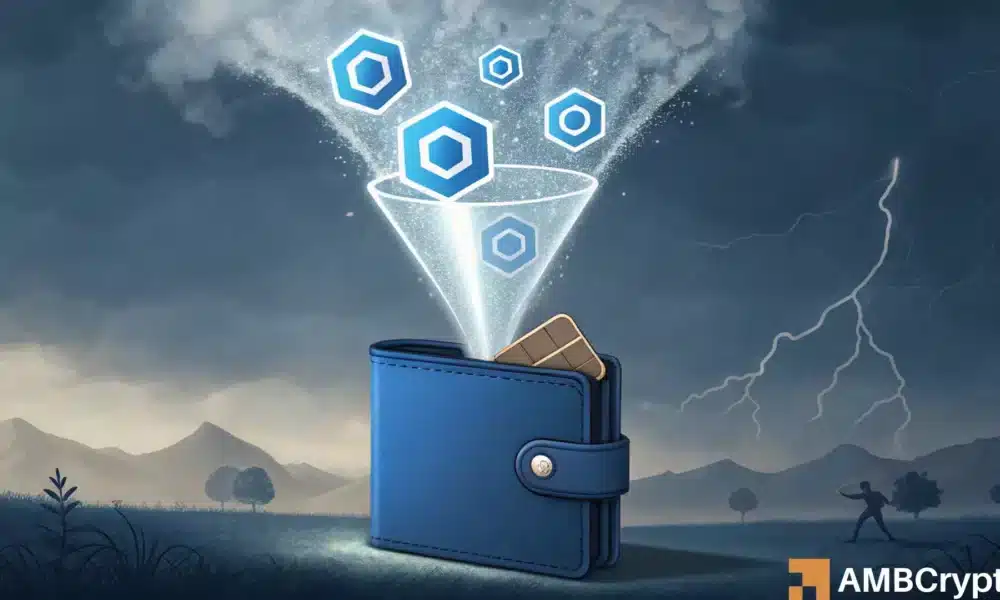Chainlink’s Recent Market Movements: Analyzing the Withdrawal of 63 Million LINK Tokens
In the dynamic landscape of cryptocurrency, every movement can signal larger trends. Recent actions surrounding Chainlink (LINK) have piqued the interest of analysts and investors alike, particularly the withdrawal of over 63 million LINK tokens from exchanges. This mass withdrawal, reported by crypto analyst Ali Martinez, serves as both an indicator of accumulation and a reflection of the underlying demand for LINK, despite the prevailing bearish market conditions.
Accumulation Signals in the Market
The movement of tokens out of exchanges is often viewed as a bullish signal. Typically, such actions indicate that investors are accumulating rather than liquidating their assets, suggesting confidence in the long-term potential of the asset. Martinez’s insights reveal that the elevated social volume and positive weighted sentiment surrounding Chainlink bolster this notion of increasing demand. For instance, the recent addition of 78,000 LINK tokens to the Chainlink Reserve highlights a growing faith in the project’s future, despite a current price decline.
Recent Price Trends and Challenges
Despite the underlying accumulation narrative, LINK’s price trajectory has been less than optimistic. Since October, the token has experienced a 30.1% loss in value, plummeting from $22.58 to $15.77. Even with a brief rally on November 10 that saw prices reaching $16.65, the enthusiasm was short-lived. Profit-taking from holders during this minor price bounce raised concerns about the strength of the current bullish trend. High selling pressure overshadowed the positive sentiment, leading many to question the sustainability of any recovery.
The Role of Net Transfer Volume
The LINK Net Transfer Volume serves as a key metric for evaluating market sentiment. Throughout October, the volume indicated a net transfer from exchanges, reflecting bearish investor behavior. The recent price recovery, however, saw this metric shift from negative to neutral territory, suggesting a momentary reversal in sentiment. Despite this shift, the dominant trend remains one of selling, as evidenced by the net transfer back to exchanges during price upticks.
On-chain Activity and Profit-Taking
The Coin Days Destroyed (CDD) metric, which tracks tokens that have remained stagnant in wallets, peaked on November 10. This spike signifies active on-chain selling, as many investors opted to liquidate their holdings during the brief price rise. The willingness of holders to realize profits—even on small upward movements—indicates a cautious market sentiment, raising the risk of a continued downward trend. If the support level at $15.45 breaks, it may further strengthen the bearish outlook.
Partnerships and Future Outlook
Despite the bearish price actions, Chainlink’s expanding roster of partnerships with established financial institutions presents a silver lining. Such collaborations are vital for the long-term potential of Chainlink, as they ensure relevance and integration within the evolving financial landscape. However, ongoing price struggles can cloud these positive developments. Investors and analysts remain vigilant, weighing potential growth opportunities against the immediate bearish trends influencing LINK prices.
Conclusion: Navigating Uncertainty
As Chainlink navigates this complex market landscape, the recent withdrawal of 63 million tokens underscores a significant element of accumulation amidst bearish conditions. The contrasting indicators of accumulation and profit-taking behavior paint a multifaceted picture of investor sentiment. While the current challenges are pronounced, the potential from ongoing partnerships may provide hope for longs. Investors are advised to remain cautious, especially if key support levels are breached, as the market’s sentiment continues to shift between bullish aspirations and bearish realities.
Staying informed about these developments will be crucial for anyone looking to understand or invest in Chainlink and the broader crypto markets.


